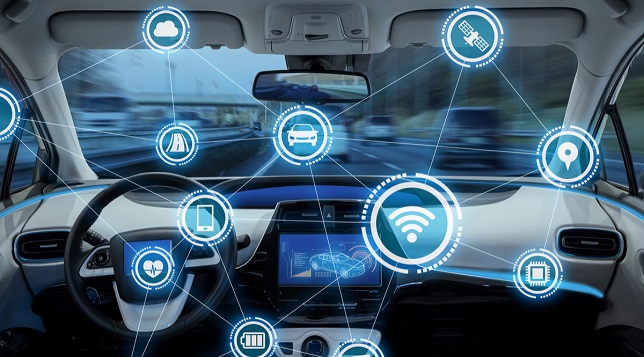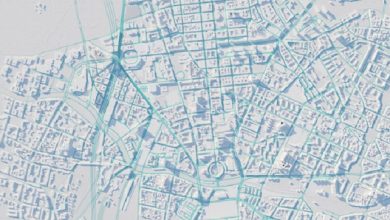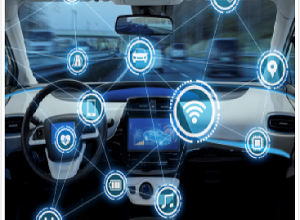Can context-sensitive telematics data lower your insurance premiums?

A simple answer to this question would be a YES! It is the primary reason insurance companies all over the world are pursuing the usage-based insurance model (UBI). Meaning, users will get their premium estimate based on their driving styles and fleet utilization. Data can be collected via a GPS unit, a cellphone, or a telematics device and that can help insurance companies determine how well you’re driving your car. Therefore, telemetry data is forever going to change the way insurance premiums get devised.
Insurance companies, as well as policyholders, can leverage big data to their advantage. With the help of GPS trackers, black box devices, and onboard sensors, insurance companies can assess high-risk drivers and calculate premiums accordingly. On the other hand, policyholders who drive well can use the same data to protest pricey premiums. In fact, at the end of 2017, 6.3 million insured people from all over the world opted for telematics-based insurance. Customizing premium based on vehicle use and driving patterns will make it fair and affordable.
Needless to say, scrutinizing driver behavior has more benefits than simply saving a couple of bucks. With careful drivers, our roads will be safer than ever—dramatically reducing accident fatalities.
Problems with UBI:
- Privacy Concerns
The world is getting more transparent every day. Easy access to wireless internet and connected vehicles has made this possible. However, in this increasingly data-dependent world, concerns for the security of personally identifiable information (PII) are justified. After all, the driver—and not just the fleets—get monitored under the usage-based insurance model. So, there needs to be strict compliance with laws that regulate the storage, processing, and collection of personal data. Users subscribed to UBI should be assured that collected data will and cannot be used beyond the purposes of insurance premiums. There is an urgent need for data standardization and transparent data handling policy—so driver hesitation to surveillance can be eliminated.
- Where’s the context?
Roads are extremely unpredictable. You never know what awaits you. Even the best drivers need to brake abruptly or accelerate beyond speed limits to avoid a collision. Say you are driving around a residential area and a child runs onto the road out of nowhere. What will you do? Of course, you need to slam on your brakes to avoid an accident! Such data inputs can yield negative driving scores and hike up your premiums more than ever! Therefore, context, not just data, is important for determining fair premiums.
- Cost of Installment
The initial cost of setting up usage-based insurance programs may eat up the expected savings. Purchasing after-market telematics devices like black boxes can be expensive. And not just that, assembling these devices and maintaining them might be an equally challenging task. Since the electronic devices in question will need a lot of stakeholders to assemble, maintain, repair, there may be difficulties in ensuring the necessary coordination.
Can the benefits outweigh the problems?
- Incentives for Good Drivers
The power of sensors, MDVRs, and telematics devices will jointly act in your favor—if you’re a good driver. The upshot here is you won’t be left to pay over-priced premiums based on your driving history, age, or gender. Good drivers will access immediate savings! In the past, insurance companies have relied on the policyholders’ driving records to estimate premiums. Now, they will be acquitted from all that guesswork. With the help of real-time data, insurance companies will know how to price their premiums rightly.
- PAYD (Pay-as-you-Drive)
Yes! You’ll no longer be paying the same premium as someone who uses their vehicles twice as frequently as you do. Black box and OBD devices are a great help in recognizing vehicle mileages and engine health. Your premiums will heavily depend on how well you care for your car and how frequently you take them for a drive.
- Fewer Accidents
A study conducted in the Netherlands showed that fleets under surveillance tend to reduce the risk of getting into fatal accidents by almost 5% . A system that lets you review your driving style opens up an opportunity to train better drivers. See if you turn too sharply, or brake harshly too often. This in turn means insurance companies will spend less on accident claims and repairs—resulting in lower expenditures for them as well.
- Eliminating False Claims
Investigating moments leading up to an accident is crucial. Without it, you’ll have to count on your drivers’ word. Ditch hours of dispute and resentment and know for sure who was at fault with UBI. Insurance investigators will get a clear picture of how the accident happened with MDVR and driver monitoring software solutions. Insurance companies will be able to save substantially by identifying fraudulent claims. Ultimately, these savings will improve premium rates—greatly benefiting the policyholders.
Conclusion:
The use of telematics devices will indubitably decrease premium amounts and encourage people to be fleet-savvy. Driver monitoring systems onboard will also help in curbing rash driving habits; thus decreasing accident fatalities. These benefits are too good to pass up! Of course, handling data securely still remains a challenge. However, user awareness and stricter laws can change that. Insurance telematics is a game-changer and it will change the way we look at motor vehicle insurances!
References:
https://dergipark.org.tr/en/download/article-file/1004023
https://dergipark.org.tr/en/download/article-file/1004023
Author:

Tushar Bhagat
Director
Uffizio India Pvt Ltd
He is the Technical Director for Uffizio India Software Consultants Pvt. Ltd. In this role he leads the company’s technical development, overseeing a team of software developers and sales professionals and managing the annual spend.
Published in Telematics Wire



